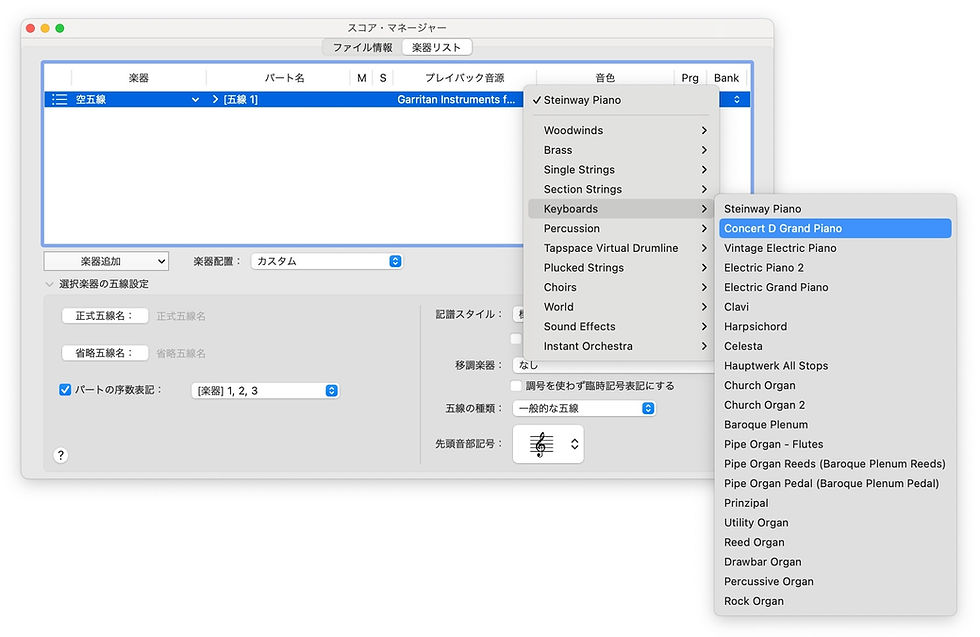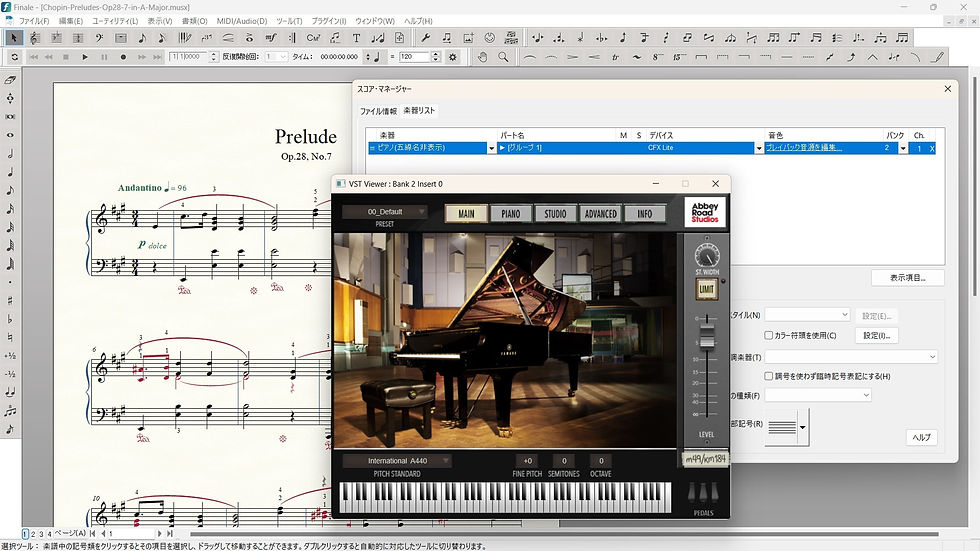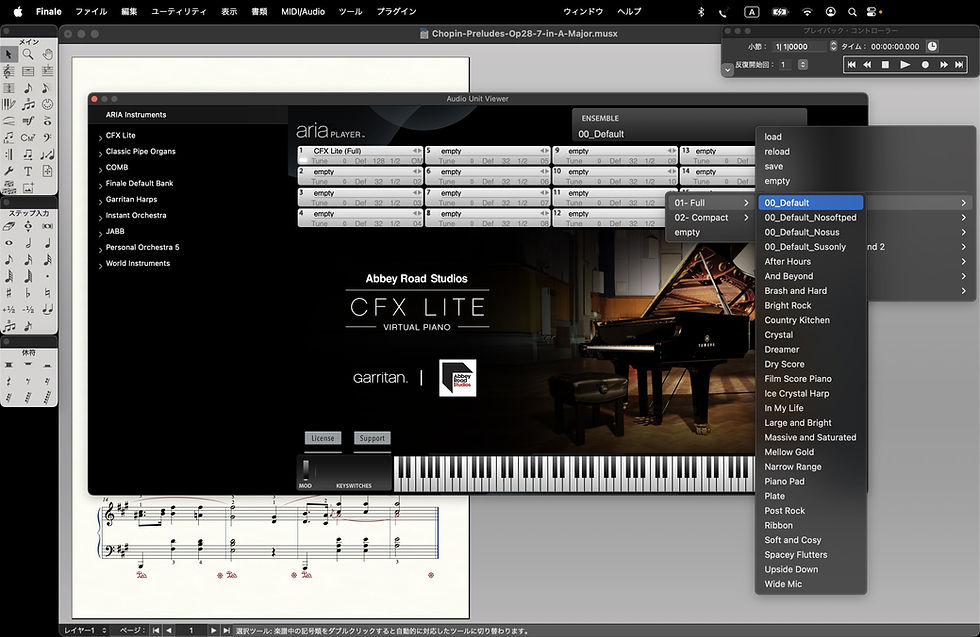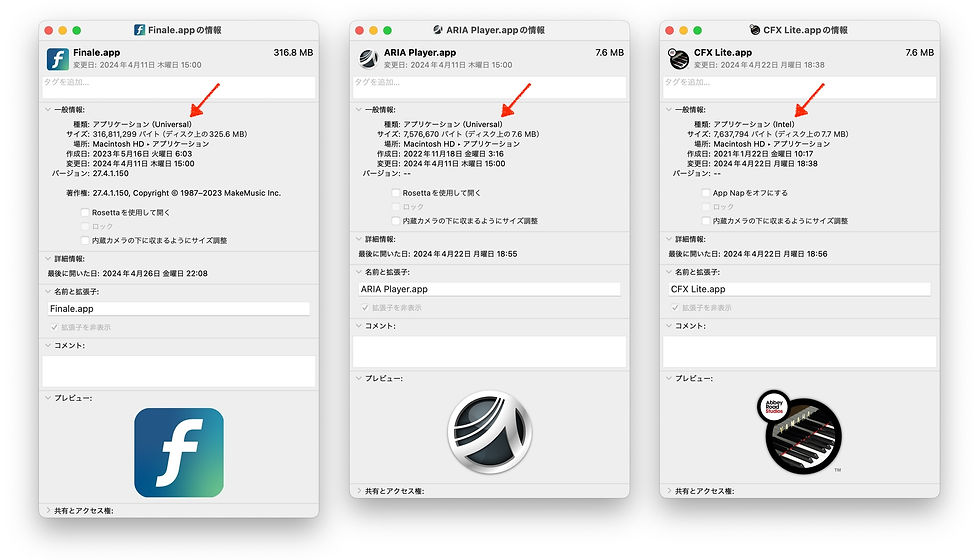Comparison of piano sound sources (GIFF, CFX Lite, NotePerformer)
- tarokoike

- 2024年5月5日
- 読了時間: 4分
更新日:8月15日
I think there are many people who use the piano when composing and arranging music, even if they can't play the piano freely. For example, at Berklee College of Music, composition major students were required to earn credits in a course called "Basic Keyboard I & II" regardless of their specialty instrument.
Perhaps for this reason, many music notation software use piano tones for playback when creating a new file.
I think these tones are interesting even if you are not a pianist, so in this third article, I will compare several piano sound sources / tones using Finale as an example, and summarize the points to note.
1. Listen and compare
First of all, please watch this video. The 16-bar Chopin Prelude used in the example is played back by switching the tone/sound source in 4-bar increments as shown below.
Measures 1-4: “Steinway Piano” from Garritan Instruments for Finale (GIFF) included with Finale
Measures 5-8: “Concert D Grand Piano” from Garritan Instruments for Finale (GIFF) included with Finale
Measures 9-12: Garritan CFX Lite (¥13,673)
Measures 13-16: Note Performer 4 (¥22,374)
2nd round: All Garritan CFX Lite
(1) Steinway Piano
This is the standard piano tone from Garritan Instruments for Finale (GIFF), which is included with Finale, and is also used in Finale's default new files, so it is probably one of the tones that many Finale users are most familiar with. The tone itself isn't that bad, but the overall sound feels a little light.
(2) Concert D Grand Piano
This tone was originally the standard piano sound source for Garritan Personal Orchestra 5 (GPO5; ¥25,652), but it was added to GIFF after Finale v25 released in 2016, and can now be used alone in Finale. This can be selected by opening the Score Manager and selecting it from the “Sound” column. Personally, I prefer the Concert D Grand Piano, which has a more resonant bass, than the Steinway Piano.

(3) Garritan CFX Lite
Garritan CFX Lite (¥13,673) is a piano sound source recorded at Abbey Road Studios in the UK, with some tones extracted from the full version Garritan CFX Concert Grand (¥36,718).
While the sound quality and miking are so focused that you'd think they couldn't be better, the CFX Concert Grand requires 133GB of free space on the HDD, which may be a bit over-specced for general users. Compared to the CFX Concert Grand, the free space required for CFX Lite is smaller at 22GB, which makes it easier to handle.
The quality of the sound is superior to that of the Steinway Piano and Concert D Grand Piano, and you can especially hear the difference in the bass range. Also, you can’t miss the fact that it comes with over 20 different piano tones.
《Windows version user interface》

《Mac version user interface》

As a note on usage, basically Garritan series sound sources and Note Performer (described below) have sound map files that are compatible with Finale, so just by installing them, you will be able to operate them in the same way as GIFF on Finale. However, since CFX Lite does not have the sound map, it does not appear in the Sound Map Priority dialog box in Finale and requires manual configuration, just like any third-party sound source.
Furthermore, in the case of Mac, while the latest versions of Finale and ARIA Player have evolved into Universal Binary applications, CFX Lite remains an Intel application and is not compatible with Macs equipped with Silicon chips. So CFX Lite cannot be used on Finale using the normal configuration method for third-party sound sources.

In order to use CFX Lite on Silicon Mac, you need to first load CFX Lite into ARIA Player, and then load that ARIA Player into Finale. This setting is a bit tedious, but once you get used to it, it's no big deal. (The screenshot above shows CFX Lite loaded into ARIA Player.)
▼CFX Lite in the ARIA Player
The only thing to be concerned about with CFX Lite is whether or not the 22GB HDD capacity*, which is not small at all, should be used only for the piano sound source.
Personally, I would like a 10GB "Super Lite" version that removes tones with special effects and features only general tones.
*Garritan Instruments for Finale (GIFF) included with Finale is less than 8GB, GPO5 is less than 13GB, and Note Performer is less than 2GB.
(4) Note Performer 4
The piano sound source of Note Performer 4 (¥22,374) is not bad, but because the initial setting has a strong reverb of 50%, the playback will very often result in a muddy sound with mixed chord tones, as shown in bars 13 to 16 in the first video.
Therefore, when playing a piano solo with the Note Performer, it is better to reduce the reverb amount to around 15% for better results.
If you were to compare only the piano tones, you would feel that it is a step down from CFX which is a piano-specialized sound source. But when you consider Note Performer's multifaceted strengths of easy to use, can be used for all-around purposes including orchestral music, lightweight and inexpensive, I think this piano tone is of sufficient quality.
2. conclusion
If you are using Finale, we recommend that you first try not only the standard Steinway Piano, but also the Concert D Grand Piano ported from GPO5.
If you want to enjoy richer piano tones that are closer to the real thing, I think Garritan CFX Lite is a good choice.
Of course, this can be used not only with Finale, but also with other music notation software that supports VST sound sources, such as Sibelius, Dorico, and MuseScore. As for the price ¥13,673, I think it is one of the cheapest external sound sources.
In particular, I highly recommend giving it a try, especially if you frequently work with piano scores but have been relying on the included sound sources.
(*Prices listed in this article are as of April 2024.)

